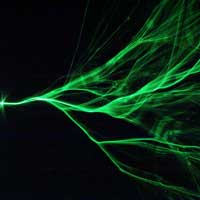
Researchers coupled a laser beam to a soap membrane, which contains random variations in membrane thickness. They discovered that when light propagates within the soap film, rather than being scattered, the light forms elongated branches, creating the branched flow phenomenon for light.
